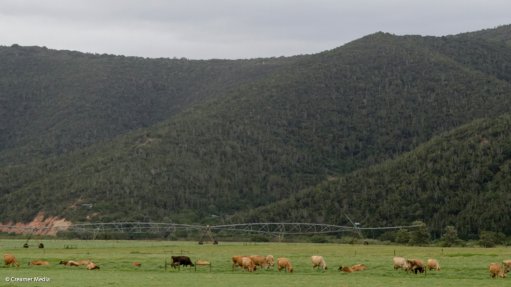
The biggest challenge facing meat producers is overcoming financial and cash-flow hurdles, while attempting to rebuild their herds to normal levels after the mass culling of animals, owing to the severe drought conditions experienced over the past few months.
Meat producers had been resilient during this time, with prices trending firmer, stated authorised financial services and credit provider First National Bank (FNB) on Monday.
The recent rains in large parts of South Africa were likely to improve production and grazing conditions, but more rain was needed to ensure that cattle producers had enough feed for winter.
Limited feed-supply and the surge in maize and other input prices were expected to cause feeding margins to come under pressure this year.
Speaking in a statement, FNB senior agricultural economist Paul Makube noted that cattle farmers would now avoid selling heifers (young female cows) and maintain farms in their current conditions, with the aim of producing more animals to be sold in the long term.
He highlighted that as meat producers started rebuilding their herds, there would be a shortage of supply in the medium to longer term, leading to an increase in prices.
Furthermore, meat prices could also be influenced by demand from consumers, who were currently struggling to cope owing to increasing interest rates, household expenses and electricity costs. The economic outlook had deteriorated and unemployment had reached a record high, stressed FNB, adding that a further rise in meat prices would be constrained by affordability, as consumers would simply switch to more affordable protein sources, such as chicken, if red meat became too expensive.
Lower herd numbers would lead to a decline in farmers’ income since they depended on sales to maintain their cash flow. As a result, cattle farmers needed to consider several factors when rebuilding their herds to avoid financial setbacks.
Firstly, herd rebuilding was a lengthy process; it could take two to seven years for farmers to return to full production and earn a regular income, depending on the severity of the situation, explained FNB.
“Secondly, financial planning plays a critical role during post-drought herd rebuilding given that many livestock farmers may be in poor financial positions, have no income, low cash reserves owing to high feed prices, and production and farm expenses to account for,” the bank added.
Lastly, with interest rates in an upward cycle, debt repayments could put more strain on the cash flow of a farm, especially if a farmer did not own the land on which he/she operated.
“Livestock farmers that are not well diversified and have used up their capital reserves should approach their lender immediately to possibly restructure or finance the purchase of heifers, feed and the repayment of current debt. Banks will always assess the situation on an individual basis since farmers implement different herd-building strategies depending on their exposure,” advised Makube.
Fortunately, not all livestock farmers had been severely affected by the drought, FNB added. As such, these farmers may adopt a more aggressive strategy of buying more heifers and acquiring more land to benefit when the price of meat went up and production conditions improved.